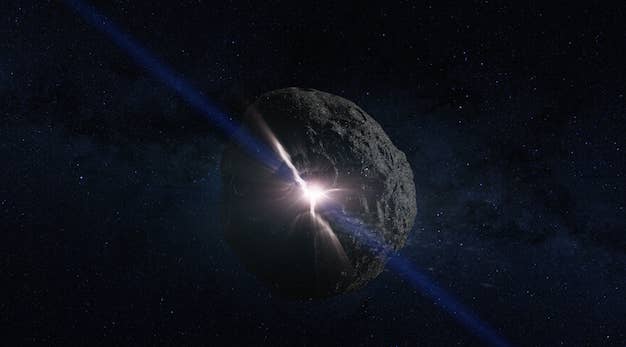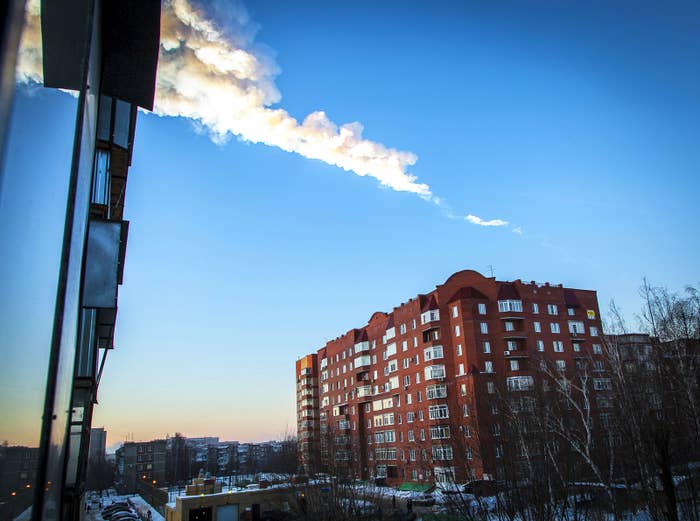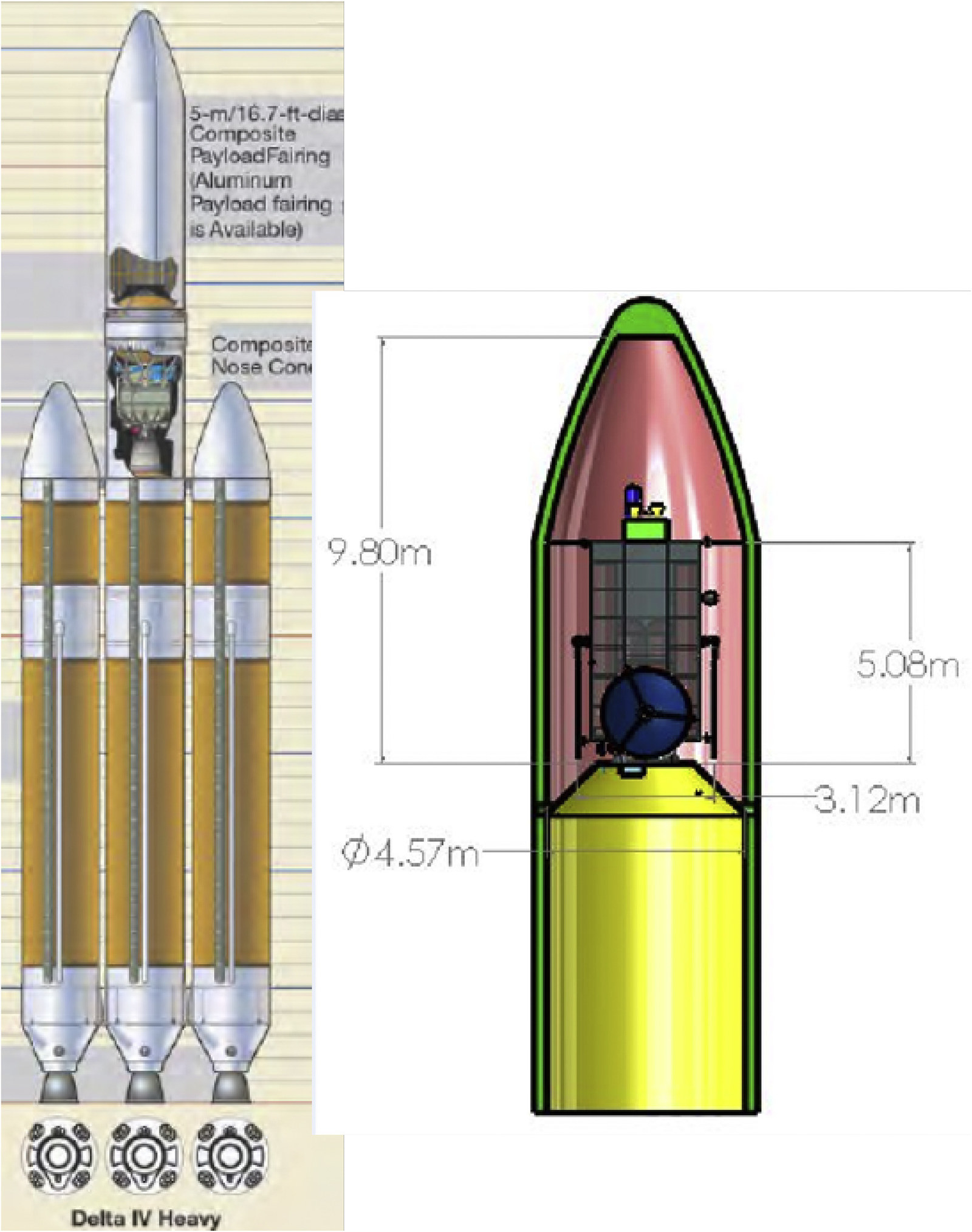
The asteroid Bennu, a boulder the size of a village, is circling the sun at 63,000 mph, now a comfortable 54 million miles from Earth.
But beginning in 2175, there is a 1 in 2,700 chance that it will hit us. What would we do?
Government scientists now have an official plan, just in case: They’ve designed a spacecraft to hit any large oncoming asteroids with a nuclear explosion.
The Hypervelocity Asteroid Mitigation Mission for Emergency Response (HAMMER) spacecraft — a collaboration between the National Nuclear Security Administration, NASA, and two Energy Department weapons labs — would either steer its 8.8-ton bulk (called an “impactor”) into a small asteroid, or carry a nuclear device to deflect a big one.
“If the asteroid is small enough, and we detect it early enough, we can do it with the impactor,” physicist David Dearborn of the Lawrence Livermore National Laboratory told BuzzFeed News. “The impactor is not as flexible as the nuclear option when we really want to change the speed of the body in a hurry.”
Just because these plans now exist does not mean the spacecraft will ever get built. NASA scientists declined to give a cost estimate for a mission, citing the sensitivity of pricing information, but for comparison, NASA’s more complex OSIRIS-REx mission, now on its way to Bennu, cost $800 million.
Reported by the journal Acta Astronautica, the HAMMER design was originally called for in a 2010 National Research Council report warning about the threat of an undetected asteroid impact to human civilization. It will be presented at a May conference for asteroid experts in Japan.
Earth has been hit by asteroids with regularity for the last 4.6 billion years, from the 6-mile-wide one blamed for the end of the dinosaur era 66 million years ago to the 2013 airburst over Chelyabinsk, Russia, that broke windows all along its 300-mile passage.

NASA’s Center for Near-Earth Object Studies now lists 73 asteroids, ranging from house-sized to stadium-sized, as having the very small chance — 1 in 1,600 for the most likely, the asteroid 410777 — of hitting the Earth in the next century.
The big question always is: If we see one headed our way, what are we going to do about it? The publication of the spacecraft design shows that planetary protection experts have accepted a nuclear blast as a real option after decades of resistance, Dearborn said.

“Smart people are taking this seriously and thinking carefully about what might be done,” MIT impact expert Richard Binzel told BuzzFeed News. “These are reasonable ideas — well thought out,” he said of the HAMMER proposal, which seeks to design a feasible spacecraft capable of deflecting an asteroid, either by impact or by nuclear explosion.
In the study, the experts considered what it would take to deflect Bennu, a 1,600-foot-wide ball that weighs 174 billion pounds, and travels in a roughly circular orbit with Earth. An impact would trigger a blast of 1.15 gigatons of energy, roughly 23 times bigger than the largest hydrogen bomb blast. Since NASA’s OSIRIS-REx will visit the asteroid in August, they relied on the same trajectory calculations for the hypothetical HAMMER mission.
Ideally, a trajectory would carry a multitude of these spacecraft just in front of the asteroid, where it would run them over in a series of 22,000 mph collisions. The basic idea is to slow the asteroid down with these punches, pulling it closer to the sun and off its trajectory with Earth.
“You have to be careful not to slow it down just enough to go from hitting the [side] of the Earth to hitting its center,” Dearborn said.
It’s difficult to calculate exactly where and when an asteroid will strike because these flying rocks interact with the solar wind and the distant gravitational pull of objects like Jupiter, steadily perturbing their orbits all the time. NASA has done it before, though, in the 2005 Deep Impact mission that smacked into the asteroid Tempel 1, surprising astronomers with the discovery that the asteroid had the composition of fine powder.

Looking for dangerous asteroids now could save a lot of trouble later, when something like a nuclear bomb in space, not a popular idea with any nation, might be the only option. “Time is the most important factor,” said Binzel, who was not part of the study team. “If you have more time, this problem gets much easier.”
For a very large asteroid that appears headed toward Earth with little warning, for example, the analysis suggests that only a nuclear explosion would safely prevent an impact. An interstellar asteroid 'Oumuamua, about as wide as Bennu, was only spotted in October after it had passed Earth’s orbital distance from the sun.
Although a bigger bomb would be better, current US nuclear warhead sizes would be sufficient to deflect a very large asteroid that comes out of nowhere, Dearborn said.
Only about one-third of all asteroids near Earth more than 460 feet across have been discovered, astronomers estimate, leaving a lot of problematic ones undetected. Designing a spacecraft to blow one up is a good precaution, Binzel said, but for it to matter, NASA needs to keep prioritizing detection.
“Hopefully we won't need an asteroid deflection plan,” Binzel said. “But until we search, we don't know.”
CORRECTION
The risk of an impact from Bennu starts in 2175. An earlier version of this post misstated this date.

